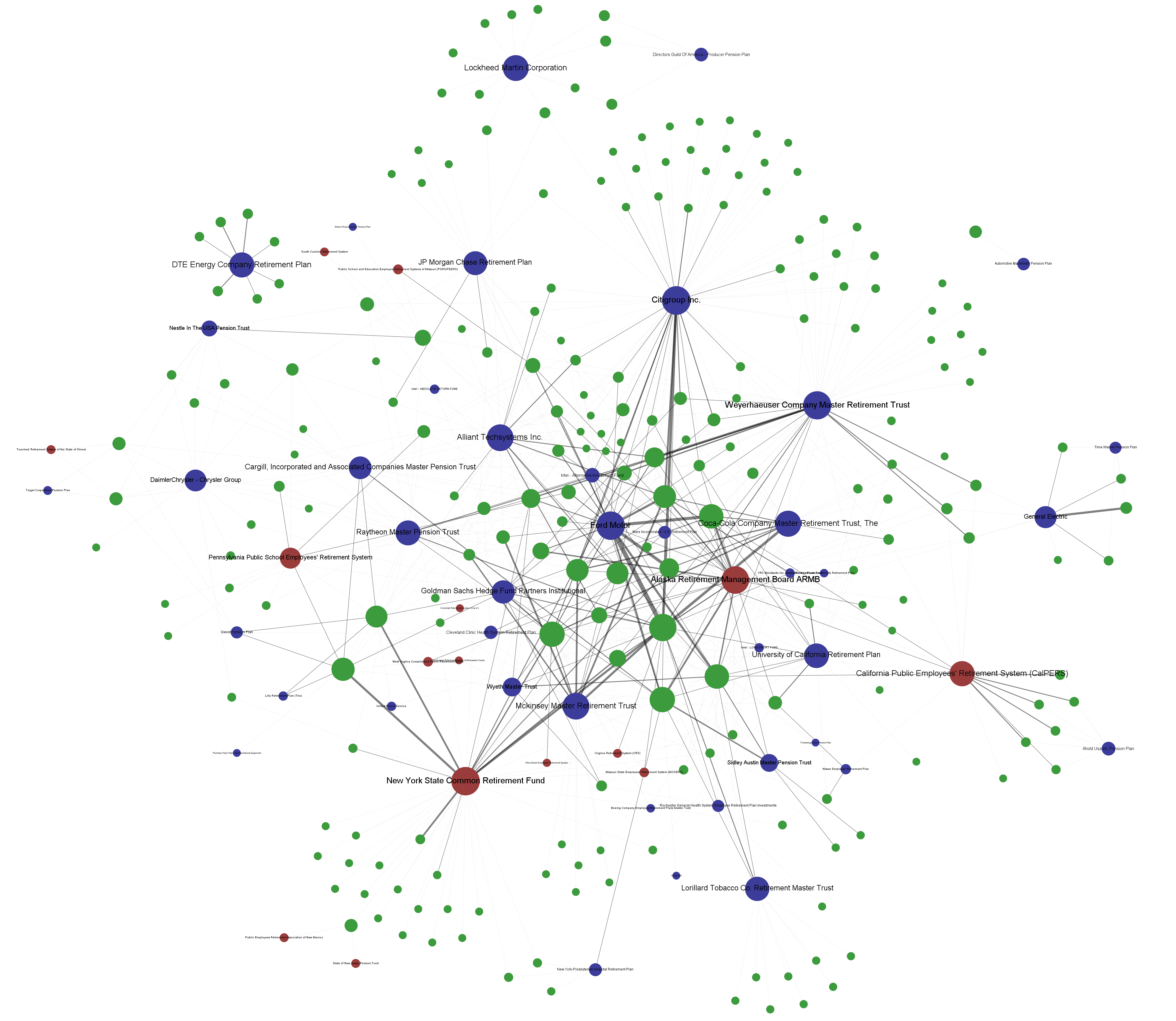 Our Shadow Influence Project has developed a cutting-edge tool, the InfluenceTracer, that displays in vivid, multidimensional detail how today’s top power brokers hold sway, capturing the very building blocks of influence. We call these players “shadow influencers,” with a hand in disasters like the global financial crisis and our nation’s military-industrial-congressional-media conglomerate. But they are far more insidious and difficult to detect than power brokers of the past. This project, which combines investigative reporting, anthropological theory, and the power of computational social sciences to mine large data sets, aims to restore accountability by forcing stealth influencers of this new era out of the shadows.
Our Shadow Influence Project has developed a cutting-edge tool, the InfluenceTracer, that displays in vivid, multidimensional detail how today’s top power brokers hold sway, capturing the very building blocks of influence. We call these players “shadow influencers,” with a hand in disasters like the global financial crisis and our nation’s military-industrial-congressional-media conglomerate. But they are far more insidious and difficult to detect than power brokers of the past. This project, which combines investigative reporting, anthropological theory, and the power of computational social sciences to mine large data sets, aims to restore accountability by forcing stealth influencers of this new era out of the shadows.
We’ve started by examining high-impact cases in the defense and finance sectors, with benefit of two unique data sets. The InfluenceTracer we created points us to trends in the data and generates information for further investigation. Our next step is to develop interactive online graphics for visitors to our website to help the media and the public to connect the dots and learn what dots to look for in the first place.
Defense: The defense portion of the project has two components. First, we have been analyzing and adding to a data set of defense companies and retired senior flag officers (generals and admirals) kindly entrusted to us by the Boston Globe (compiled under the direction of journalist Bryan Bender.) Building on the Globe’s original data set, we have compiled a database of some 1,500 individuals, along with hundreds of their connections to companies, organizations, sponsors, and projects over time. We can visually illustrate what The Globe demonstrated: that today many of these retired senior military officers pursue a multi-pronged strategy that affords them money and influence, unlike, say, 15 years ago, when they stopped working when they retired from military service. Many serve simultaneously as paid consultants to defense contractors, members of boards of such contractors, and members of government advisory boards that afford them security clearances. The InfluenceTracer enables us to spot trends, chart patterns of influence, and uncover potential cases that warrant further investigation.
One exemplary case we identified and are now investigating in-depth is that of the U.S. Army’s signature program to create an integrated battle system that could operate in new and complex environments. (The name of the program must remain confidential until we release our work in the media and on our website.) This Army program persisted for 15 years and cost the taxpayer some $20 billion, despite repeated testing failures and a general consensus that the program didn’t and couldn’t work. Our goal is to identify and illustrate the networks that explain why. Having already incorporated information about the networks of retired officers and companies, we are now adding connections to politicians, congressional staffers, and media to the database. We want to discover the networks linking these players and entities that enabled the program to last so long, in spite of recognized colossal failure. Our preliminary findings show that: (1) about 75 percent of the companies hired to work on the project retained retired generals and admirals who previously worked on the program in a governmental capacity; (2) these retired officers form dense networks (cliques) that connect the companies involved; and (3) such networks are multi-generational and self-perpetuating.
Finance: In the finance sector we are analyzing the network dynamics of hedge funds and their relationships to institutional investors. The Foundation for Fund Governance has given us privileged and full access to its unique database of 10,000+ hedge fund directorship positions, including the names of nearly 2,000 individuals, on the boards of 5,000 offshore hedge funds (compiled from SEC and other regulatory filings.) The Foundation also provided us with the names of some institutional investors in these funds (compiled from Labor Department filings). This list includes many state, city, county and corporate pension funds, as well as university endowments and foundations. Our recent featured piece in The Huffington Post, Caymans’ Folly: Do You Know Where Your Pension Funds Are? conveys some of our preliminary findings. This work is potentially very high-impact because so many pension funds, charity endowments, and mutual funds have invested in hedge funds because of their promise of high returns. Despite the increasing involvement of this middle-class money, little is known about hedge fund management and the real risks that surround them. The InfluenceTracer tool enables us to examine the backgrounds, experience, and networks of independent directors and to probe their ability to make independent decisions. In particular we are looking into the role that multiple directorships have on decisions made by hedge funds, the investments of institutional investors in hedge funds, and exposure to systemic risk. The implications of this work for the millions of individuals around the world whose assets may be at risk and for the free market are hard to overestimate.
We welcome your feedback, ideas, and support of this project. We can be contacted at jwedel@gmu.edu. To donate, please click on http://shadowelite.net/donate.
